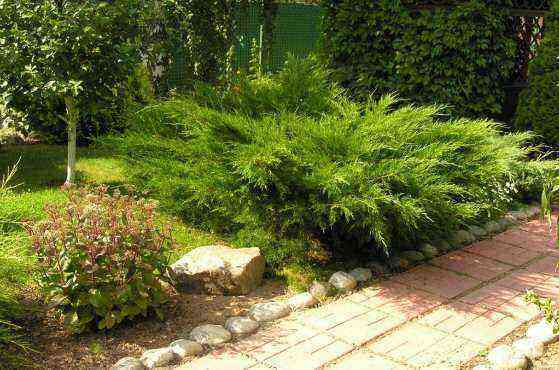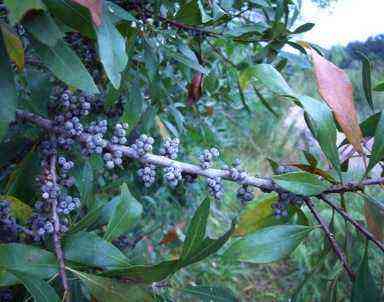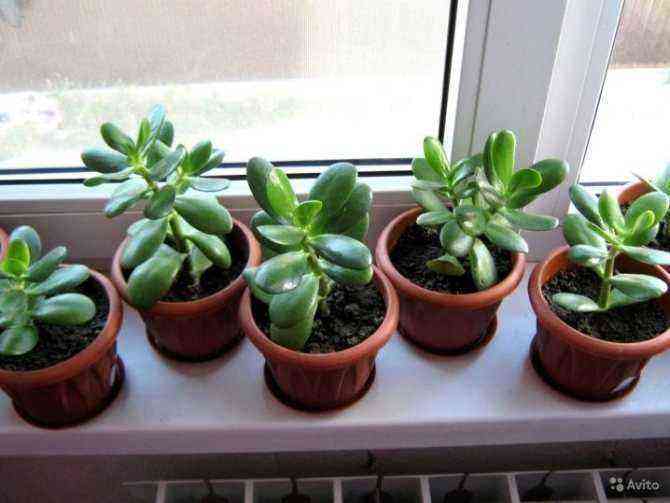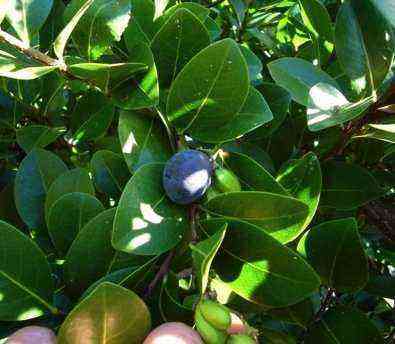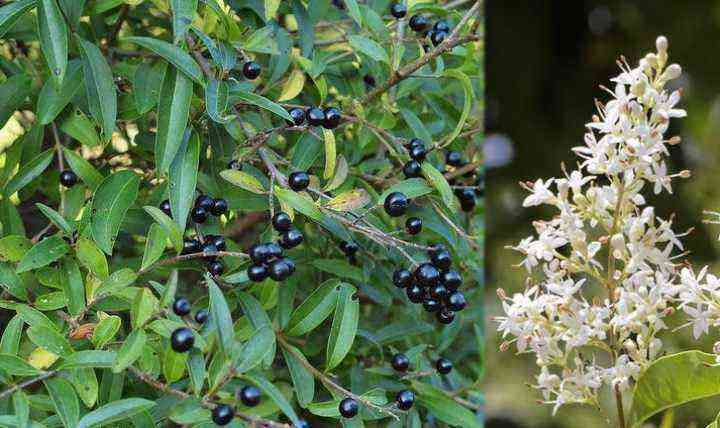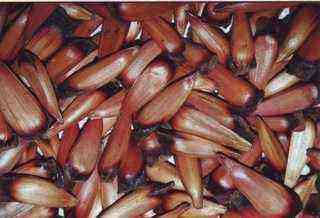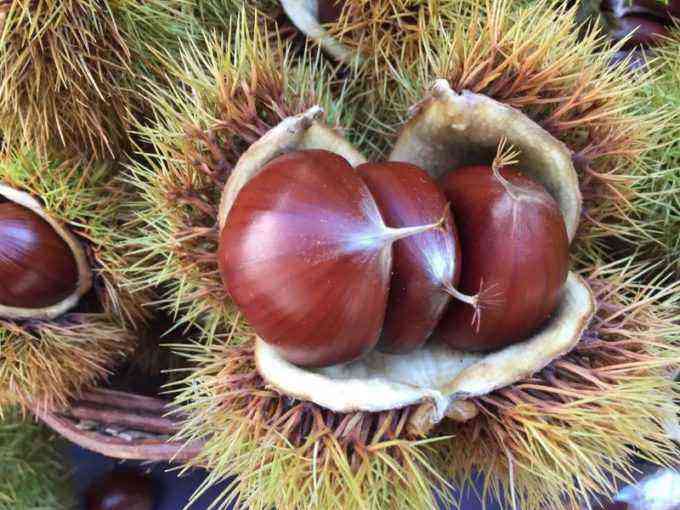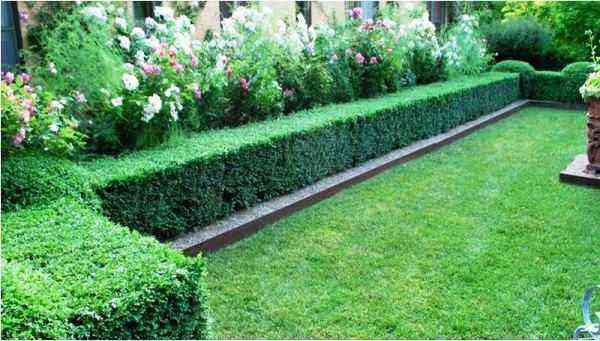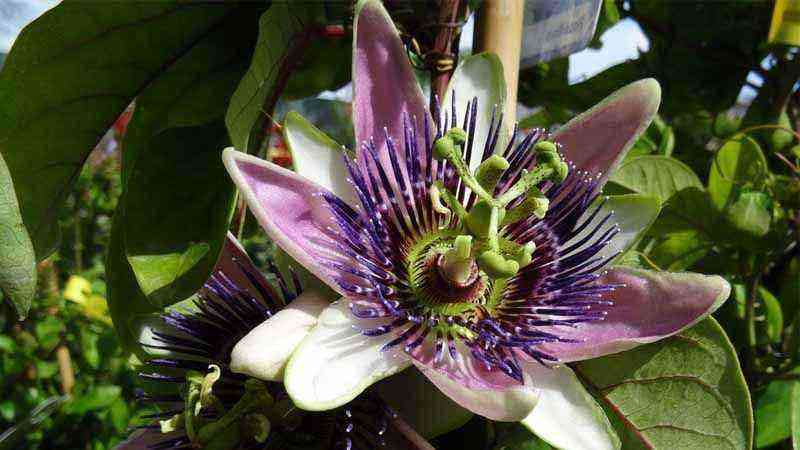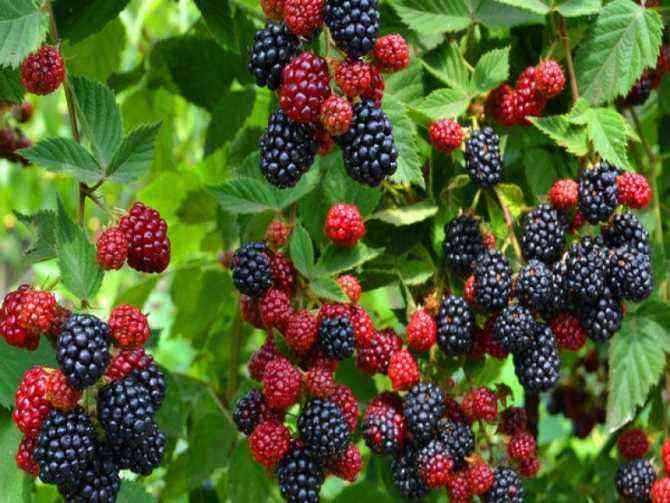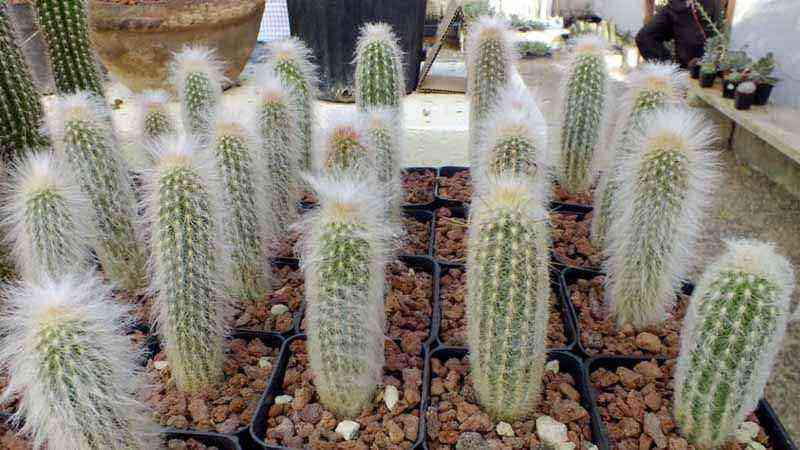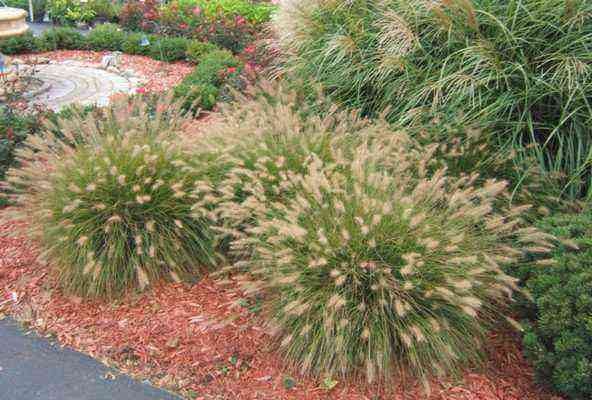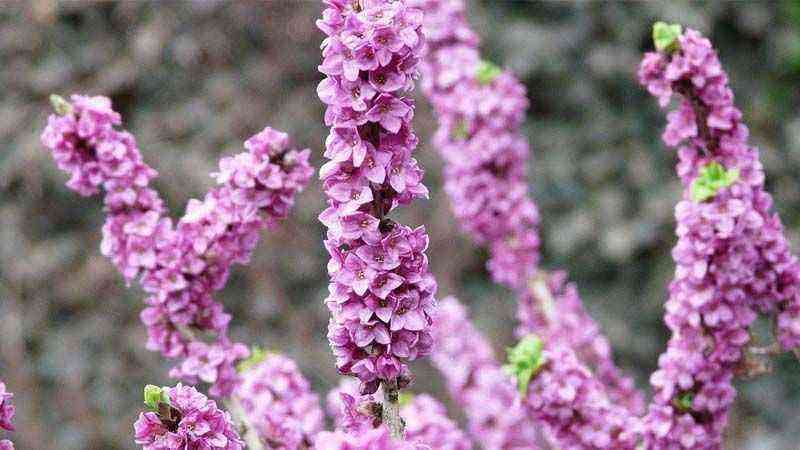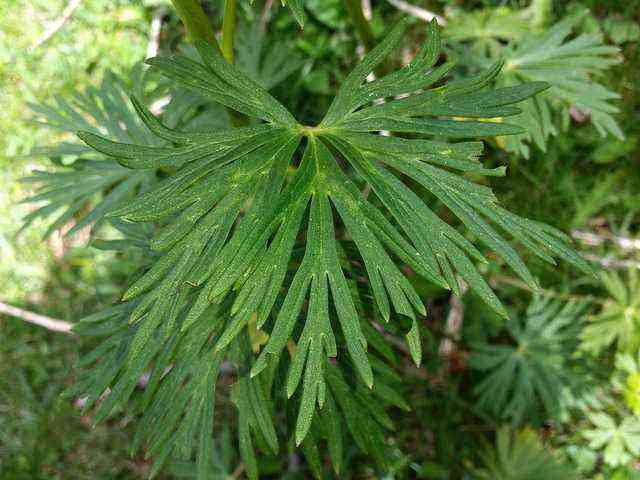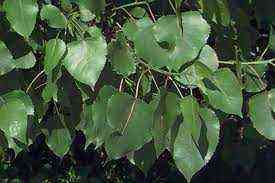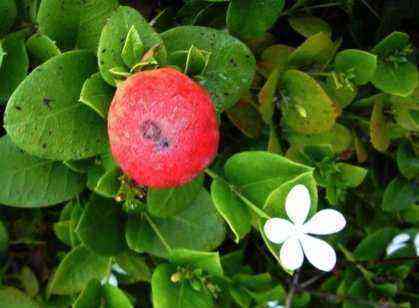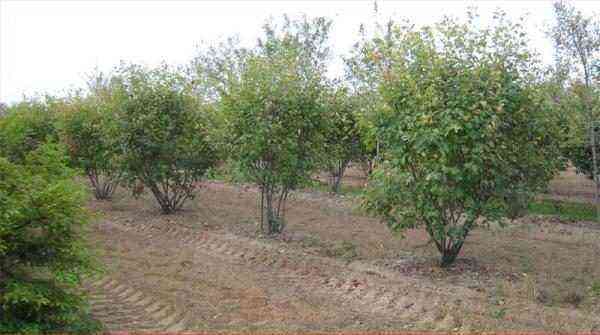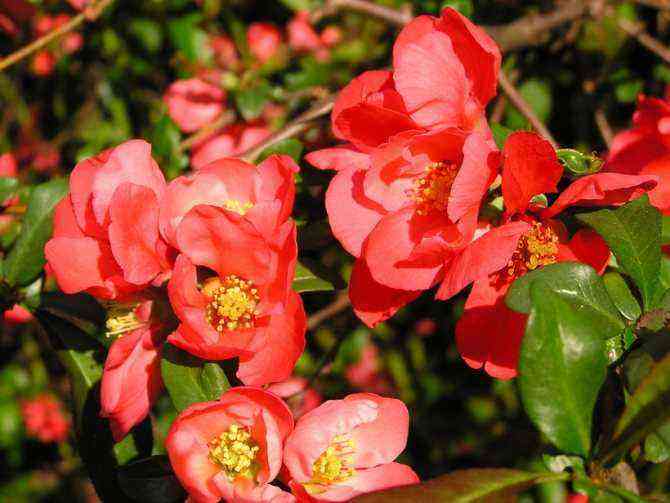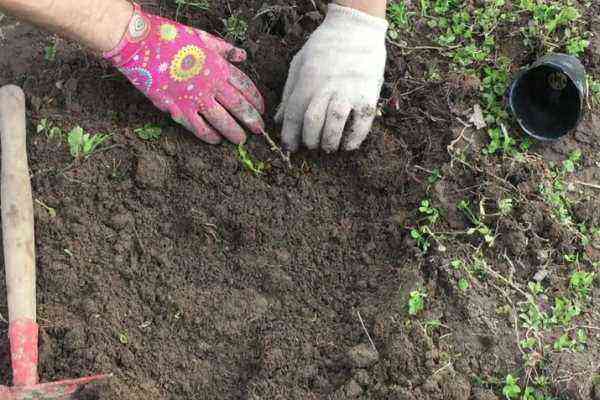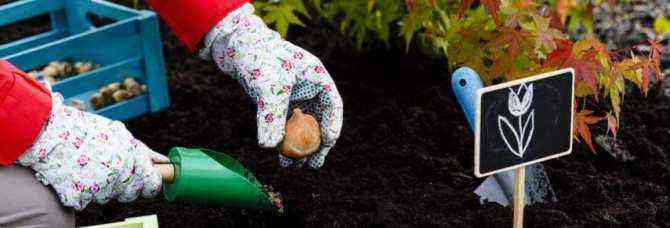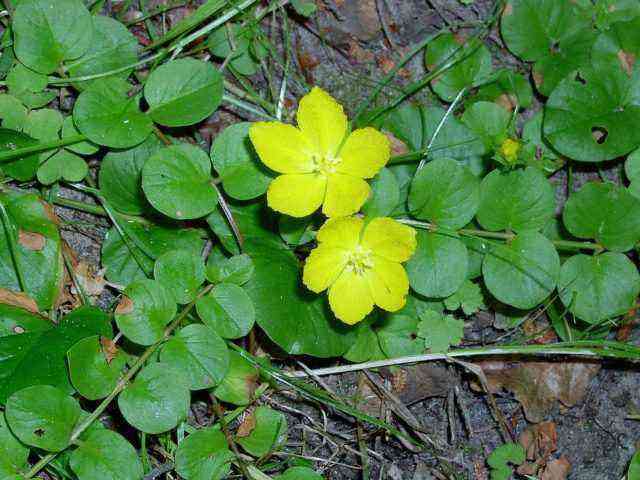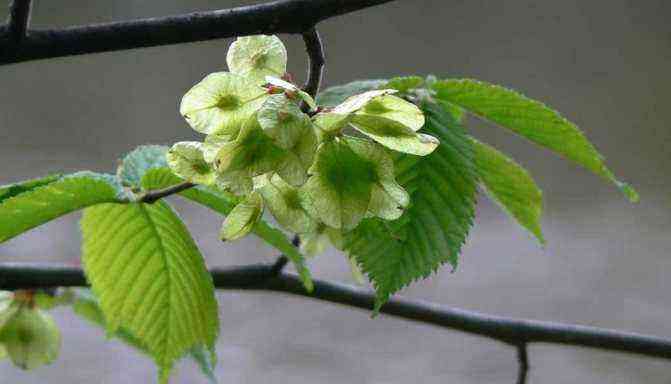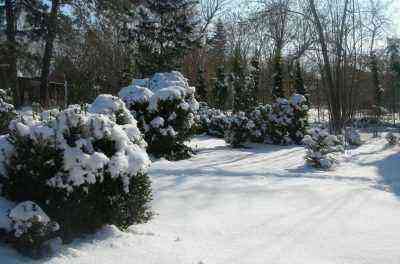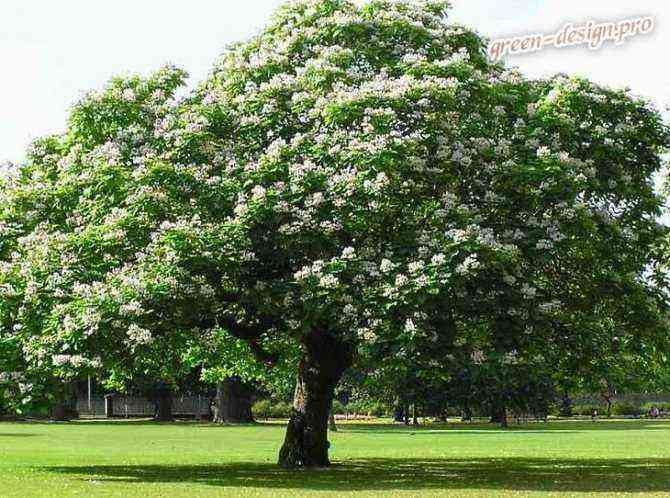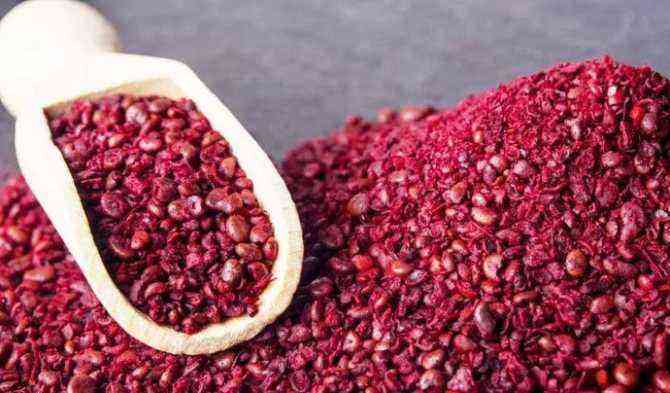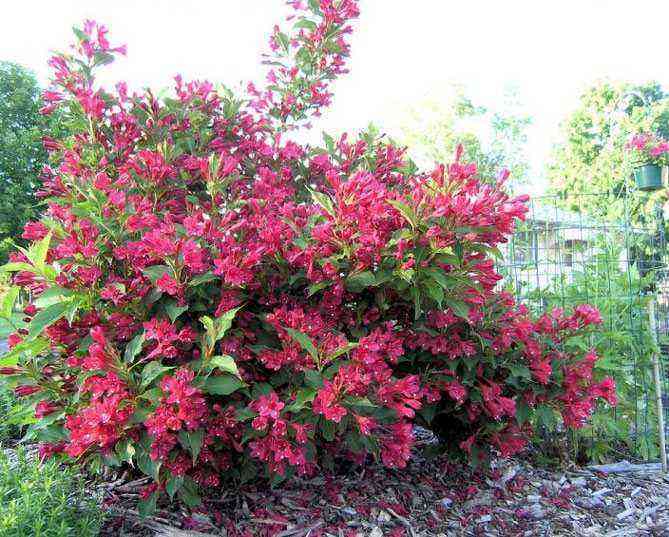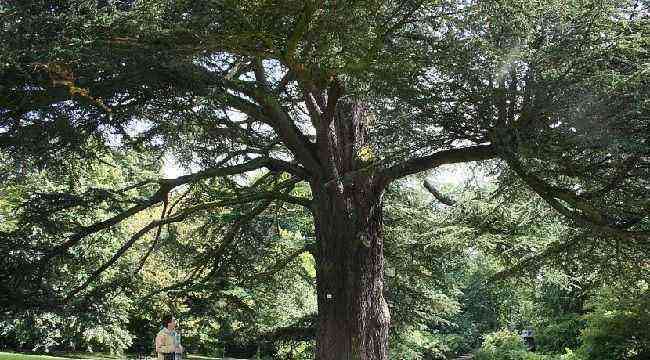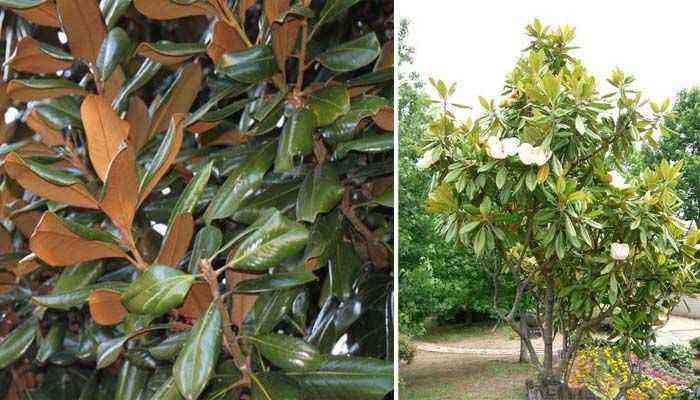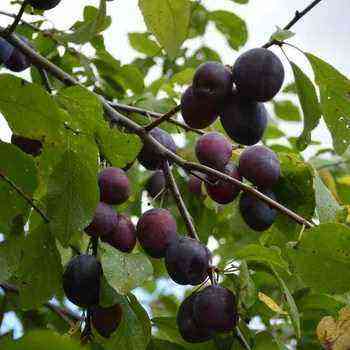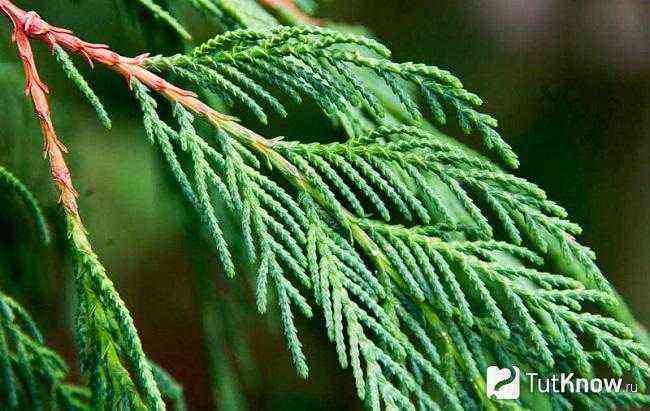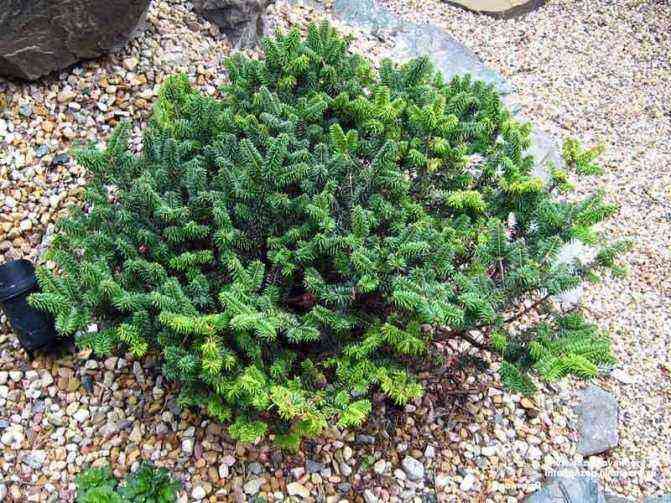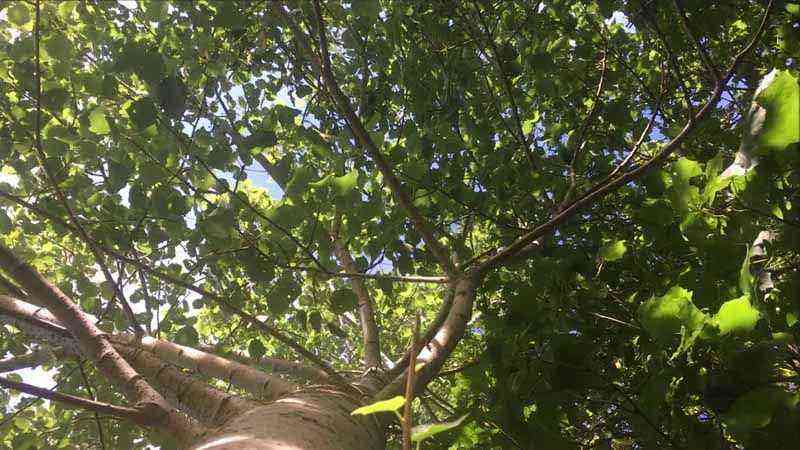Juniper Mint Julep is a hybrid form derived from the Chinese and Cossack varieties. It is also sometimes called the “Chinese Mint Julep”. Juniper belongs to the genus of evergreen coniferous shrubs, Cypress family. Unlike tree-like relatives, reaching 10-15 meters in height, the height of the Mint Julep bush is not great – about two meters.
Important: juniper is poisonous, care should be taken when working with it. Moreover, all its parts, needles and berries are toxic.
Medium juniper Mint Julep: variety description
The medium juniper Mint Julep is a hybrid of American origin, developed in the mid-20th century by plant breeders in New York State. This juniper variety owes its name to the famous alcoholic cocktail “Mint Julep” in the South of the USA, in which, in addition to pieces of ice, bourbon and sweet syrup, mint leaves are added.
The exquisite aroma of the hybrid juniper shoots really evokes associations with a mint cocktail. Juniper bushes “Mint Julep” are distinguished by their splendor and softness, their shoots in an arc incline to the ground, forming an angle of about 45 degrees. Scales of dense needles are colored in different shades of green – from light, emerald, to rich and dark. Small rounded fruits resemble blue cones, covered with a bluish bloom.
One of the distinguishing features of the Mint Julep variety, inherited by him from one of his parents, a Cossack juniper, is the high content of poisonous essential oils in the tissues of all parts of the bush. These toxic, strong-smelling substances are extremely dangerous to humans and animals.
Like other junipers, mint julep is a dioecious shrub. You can distinguish male plants from female plants by the density of the crown (in the former, it is usually thicker), as well as by the color of the cones in the flowering phase: on male specimens they have a yellow tint, on female ones – light green.
Juniper variety “Mint Julep” has a number of advantages. These include the following qualities:
- resistance to severe frosts (up to -40 degrees) and drought;
- the ability to withstand sharp and significant temperature changes;
- the variety takes root in an urban environment with its gassed and dusty air;
- has a high growth rate relative to other varieties of juniper;
- can grow on soils of different composition;
- the average age of juniper bushes of this variety is about a century, which allows them to be attributed to long-livers.
Advantages and disadvantages of the variety
The advantages of the variety include:
- the ability to quickly clean up the polluted area;
- unpretentiousness in care;
- pleasant aroma that prevents the occurrence of infections and ailments of the respiratory tract.
Among the disadvantages of Juniperus media pfitzeriana are:
- before planting, you need to carefully calculate the holes on the ground so that you do not have to transplant it later;
- needles need regular watering and irrigation from a spray bottle (the minimum consumption for one such procedure is about ten liters of water);
- direct rays of the sun can provoke burns near the needles;
- spoiled branches must be cleaned up constantly and in a timely manner.
Sizes of an adult plant of a juniper Mint Julep
Since the variety “Mint Julep” was obtained from two completely different types of juniper, creeping Cossack and tall Chinese, as a result, it acquired an average height and width of the crown. At the age of 10 years, juniper bushes of this variety reach their maximum height and degree of spreading. In favorable conditions and as a result of systematic care, some specimens can reach a height of 2 m, and the diameter of their crown sometimes equals 3,5 m. The relative compactness of the Mint Julep juniper bushes in combination with the amazing flexibility of the fluffy shoots makes it possible to use them for figured landscaping of garden plots …
Neighborhood with other plants
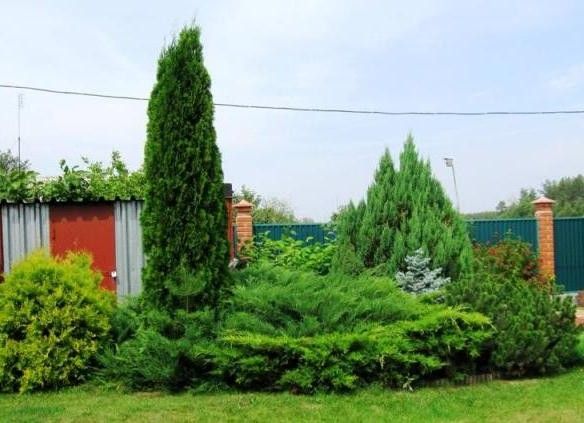
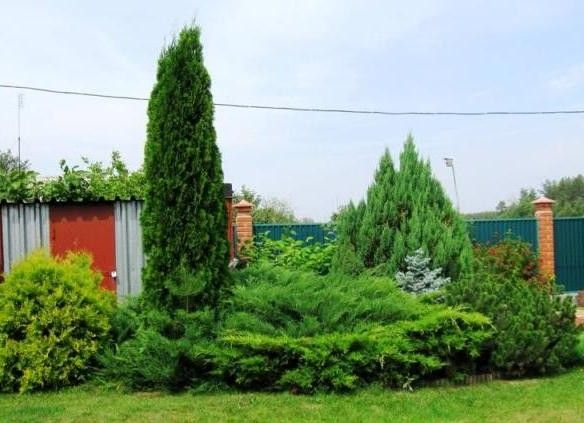
Evergreen shrub is not whimsical to “neighbors”. Grows harmoniously with other conifers and deciduous species. The only exception is that you cannot plant a juniper next to herbaceous plants, fruit trees and shrubs. Unfortunately, juniper grows poorly and can die next to such a neighborhood. Large trees and shrubs are the most sought-after companions of the mint julep. Barberry, Japanese and yellow rhododendrons, heather, erica, cotoneaster, hydrangeas and others create an amazing tandem with juniper. A spectacular combination of emerald needles and bright large inflorescences allows you to play on contrasts.
Growing next to other types of juniper, with thuja, pine mint julep creates the effect of planting the soil, filling in all the gaps. It grows well on rocky landscape, adding color and originality to it. In addition to aesthetic pleasure, the shrub produces phytoncides that have a beneficial effect on human health and purify the air.
Juniper Mint Julep in landscape design
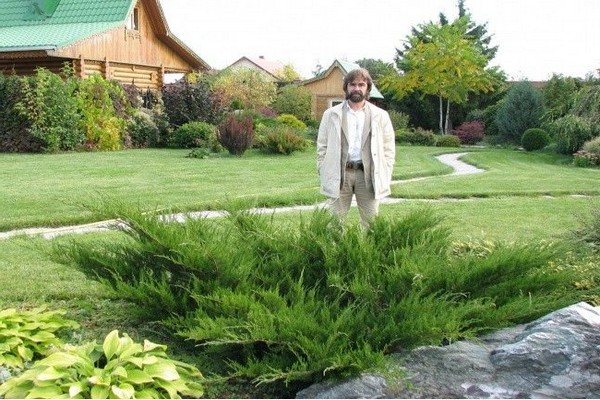
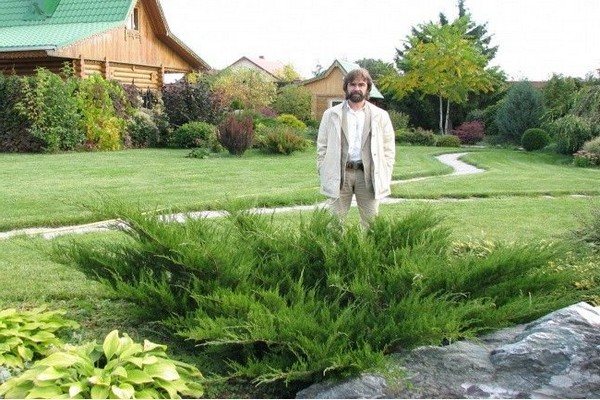
Juniper Mint Julep in landscape design: photo
Despite the rather rapid growth of shoots, the Chinese juniper Mint Julep still grows rather slowly, therefore it does not cause much trouble to the owners of garden plots. After a shaping cut of the Mint Julep juniper, its crown retains its contours for a long time. These evergreen coniferous shrubs delight the eye with the green of their branches all year round, regardless of the season. Quite often, the Mint Julep variety is used to form standard bushes, as well as for the construction of figured compositions on frames. Flexible and long shoots “Mint Julep” allow you to turn it into a creeping plant, fixing the branches at the surface of the earth. This method is especially often used in areas with difficult terrain, when you need to fix juniper bushes on a slope or slope.
In order to grow the Chinese juniper “Mint Julep” tall and strong, it is practiced to tie its shoots to a supporting structure. After some time, the flexible branches will get stronger and will constantly remain in an upright state. This versatility makes the Mint Julep variety a favorite of designers and gardeners, since it can be used to decorate gardens in a variety of styles. Mint Julep juniper bushes can equally well play the role of a bonsai tree, heather, a vertical accent, or an element of a flower garden or alpine slide. Their soft fluffy shoots can serve as a background for other plants, and can act as a compositional dominant.
The unpretentious nature and ability to survive in adverse conditions allows the use of the Mint Julep juniper for landscaping urban areas, creating green hedges along highways, purifying the air near health and educational institutions.
Juniper variety “Mint Julep” gets along well with other plant crops, be it other coniferous shrubs or trees, or deciduous or herbaceous plants. The combination of juniper with heather, rhododendrons, hydrangeas, erica, whose flowers stand out effectively against a green background, looks especially advantageous. The only exception is fruit and berry crops, the neighborhood with which is undesirable.
Care
Juniper Mint Julep is an unpretentious and drought-resistant plant, but reacts gratefully to care and regular watering in a hot period (2 times a week). For the beauty and freshness of the crown, it is recommended to do evening sprinkling.
With systematic precipitation, it is not necessary to water the ephedra.
At the first time after transplanting, the seedling must be irrigated and moistened daily as the top layer of the soil dries.
Additional fertilizing
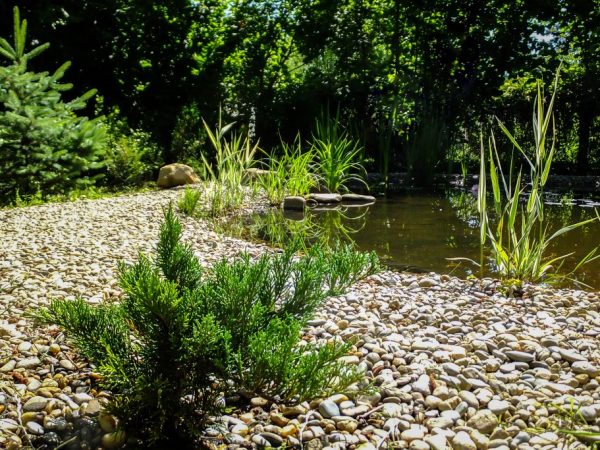

In the spring, it is necessary to remove dried twigs
| Number of dressings per year | Time | process | fertilizers |
| 1-2 times | April, late August-early September | Spread out the granules in the trunk circle or water the soil with a nutrient solution | Nitroammophoska, “Uniflor”, “Novofert”, “Agrekol” and others like that. |
Trimming
Mint Julep can do without shaping, but needs annual sanitary pruning. In early spring, dry and damaged branches are removed from the bush.
To create a tall and slender bush, pinch the lateral shoots, and for a spreading, creeping shape, cut off the top of the head.
Preparation for winter
The trunk circle of the plant is covered with a thick layer of peat for the winter. Young seedlings can be covered with spruce branches. The spreading crown must be tied up to avoid deformation by snow.
Medium Chinese juniper Mint Julep: planting and care
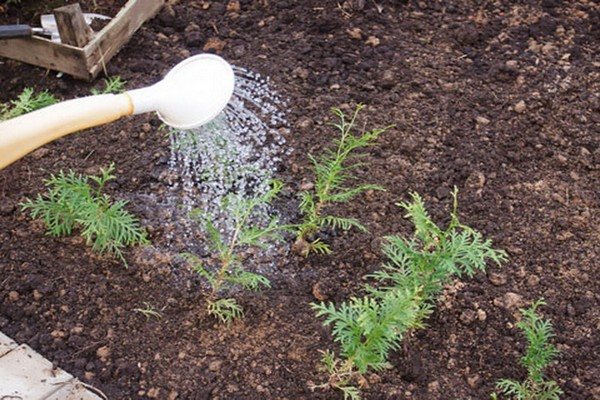

The Mint Julep variety will successfully take root on almost any soil. However, the best option for growing it is loose sandy loam and loamy soils. Despite its frost resistance, juniper belongs to light-loving crops, therefore, it is recommended to choose an area well-lit by the sun for its placement. In shade or partial shade, it will also survive without any problems, but its crown will lose its decorative qualities – it will become looser and dull. Drought does not threaten the health of these persistent coniferous shrubs, but excess moisture in the soil can lead to sad consequences – the root system will begin to rot, which can cause the death of the plant. In this regard, those areas should be avoided where groundwater comes close to the surface of the earth. Also, it will not be superfluous to drain the soil.
The preparatory stage of planting juniper seedlings in the ground
The quality of the planting material invariably affects the success of the entire event for the cultivation of juniper plantings. Seedlings should be purchased only from trustworthy, trusted producers. When examining a seedling, there should be no signs of rot, disease, mechanical damage – only strong and healthy plants will be able to endure the stress of transplanting and take root in a new place. It is best to opt for seedlings whose root system is in a container with a nutrient substrate – the percentage of their survival rate is much higher than that of bushes with bare roots.
The most suitable time for transplanting Mint Julep seedlings into open ground is mid-April, after the ground has warmed up enough. Half a month before disembarkation, you should start preparing the landing recesses. Since it is better to replant young juniper bushes together with a lump of earth, the diameter of the planting pit should be two or three times its size. The optimum depth of the fossa is 0,6 m.
Before planting the bushes, the planting pits should be thoroughly drained, forming a layer about 10 cm thick. This can be done using expanded clay, brick fragments, gravel, pebbles. Coarse sand can be poured over this layer. You can prepare a nutritious soil mixture that will help the seedlings adapt in a new place and get the necessary supply of nutrients. To do this, it is enough to mix peat with turf soil and river sand in a ratio of 2: 1: 1. During the time remaining before planting juniper bushes, the nutrient layer will have time to settle.
Juniper Mint Julep: transplanting an adult plant
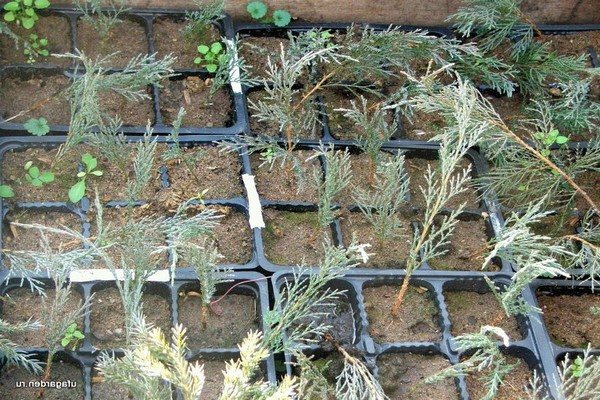

Adult bushes of the medium juniper Mint Julep do not tolerate transplanting very well and can die due to stress, therefore, it is necessary to choose a place for planting seedlings very carefully. If several juniper bushes are planned to be placed on one site, their ability to grow should be taken into account. Therefore, an interval of 1,5-2 m should be observed between the planting pits. Step-by-step instructions for planting juniper seedlings include the following steps:
- A seedling is placed in a pre-prepared planting hole. In this case, it is extremely important not to violate the integrity of the earthen coma and not to damage the roots.
- The depression is filled with layers of nutritious soil mixture, which is gradually compacted. The root collar of a young juniper bush should be flush with the ground.
- Having tamped the earth tightly around the seedling, water it abundantly, for which settled warm water is used.
- After the water is completely absorbed into the soil, the near-stem radius should be loosened and mulched. Sawdust and needles are suitable as mulch. This procedure will preserve moisture in the soil and protect the root system of the seedlings from overheating and freezing, as well as prevent the germination of weeds.
- In the first week, seedlings need regular sprinkling with warm water, which is recommended in the evenings.
Irrigation and top dressing regime
Mature juniper bushes “Mint Julep” tolerate drought well, but weekly watering procedures will have a beneficial effect on their health and appearance. On average, one bush takes from 1 to 3 buckets of settled water. The best time to water is evening. Sprinkling will also not be superfluous, it is recommended to carry it out every 3-5 days, early in the morning or in the evening after sunset.
You can apply top dressing a year after planting a young juniper bush in open ground. This is done in spring with the help of complex dressings containing nitrogen and other nutrients. For the normal development of a young plant, it is enough to apply fertilizers once a season. The interval between fertilization for adult juniper bushes is 1 to 2 years.
Soil care procedures
The soil around the Mint Julep juniper bushes needs loosening and mulching. In springtime, after the snow melts, the old layer of mulch must be removed and burned, as it can be a source of infection with fungal infections. The soil around the trunk of the juniper must be thoroughly loosened and covered with fresh mulch. The loosening procedure should be repeated every time the rain passes or watering is carried out. The last loosening of the season occurs in autumn and should saturate the soil with oxygen necessary for the safe wintering of the juniper.
Juniper Crown Care Mint Julep
In order for the average Mint Julep juniper to retain its attractive appearance, it is necessary to carry out sanitary and cosmetic pruning in a timely manner.
In the spring, juniper bushes should be healed by removing all dry, rotten and damaged shoots from them, as well as those with signs of infection. The plant material remaining after cutting the juniper Mint Julep is necessarily burned, since it can serve as a source of infection.
It is possible to form the crown of the Mint Julep juniper throughout the summer, depending on the speed of regrowth of shoots that violate the contours of the crown.
By using formative pruning from a young juniper bush, you can create a bonsai-style tree. For these purposes, the lower shoots are removed, and the trunk is tightly wrapped with metal wire, after which it can be bent, giving the shrub the desired shape. The process of forming the trunk of a bonsai takes from 2 to 3 years, then the wire is removed and it is the turn of curly pruning of branches. Only very young junipers are suitable for this long procedure, since adult plants perceive any changes extremely negatively.
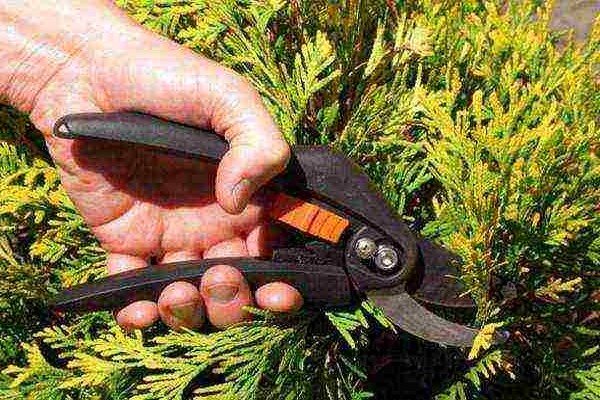
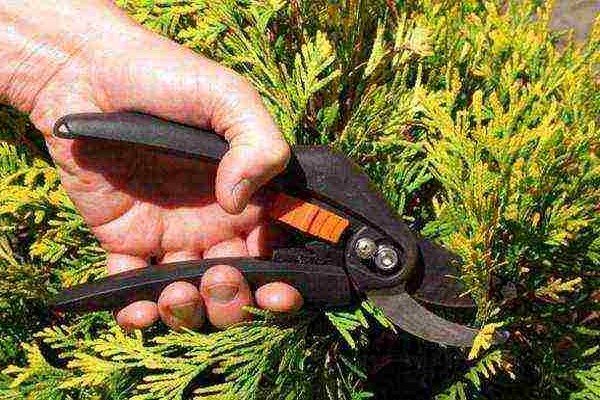
Preparing juniper “Mint Julep” for wintering
The hybrid variety “Mint Julep” is distinguished by a high degree of frost resistance. Adult plants survive the winter without shelter. But young bushes with non-lignified shoots may need protection. To begin with, you should mulch the near-stem radius, covering it with a layer of peat. Then you should tie the shoots of the bush and cover them with spruce branches. It is also recommended to tie the branches of adult juniper bushes – together it will be easier for them to withstand the weight of the snow cover without damage.
Growth rate of “Mint Julep” juniper
Compared to most of its counterparts, the Mint Julep juniper variety is a fairly fast-growing variety, whose annual growth in favorable conditions can be 10 cm or more. As a rule, it grows in height faster than its lateral shoots lengthen. The period of rapid growth lasts from April to August. In the conditions of the domestic middle zone, the Mint Julep juniper cannot boast of high growth rates and is almost indistinguishable from the slow-growing varieties.
Features of landing
The first thing to note: the plant grows quite widely in an adult state, and time passes quickly, so you need to immediately choose a spacious area. If a transplant is planned, then the plant can then recover for a long time, since the root system does not tolerate “moving” to another place.
- Juniper of this variety loves sunny and spacious areas. Conifers will also be very good neighbors for him – thuja, pine and others.
- Can grow in any type of soil, but preferably in drained soil. Then there will be no stagnation of moisture in the root system, and uniform oxygenation will allow the plant to feel great. You will notice this by the bright and lush crown of a juicy emerald hue.
- The best period for planting is the first months of spring.
- The planting hole is dug no more than 60 cm deep, and calculate the width as follows: spread the roots of the seedling and the diameter of the hole should be several times larger than the root system.
- About ten centimeters of a drainage layer of broken brick and gravel lies at the very bottom.
- Then it is sprinkled with a self-prepared soil mixture, consisting of 1 part of river sand, 1 part of sod land, and 2 parts of peat. If the soil is too acidic, then it should be calcified. High acidity can inhibit the growth of juniper.
- A seedling is set on top, and the roots are straightened. Then the rest of the soil is poured. The root collar is buried in the ground in such a way as to be at the same level with it. Take into account the other layer of mulch that will retain the right amount of moisture for the plant.
- Since the plants will subsequently grow strongly, albeit slowly, no more than a few seedlings per square meter should be planted.
Last but not least, water the young plant well. If you rarely visit the country, then it is better to plant your juniper in a partial shade or diffused lighting zone. Thus, the soil will not dry out as much as under the scorching sun.
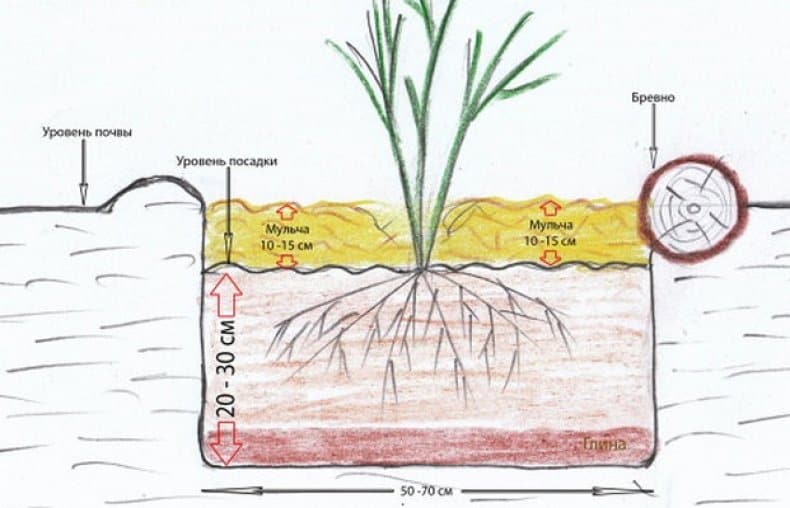
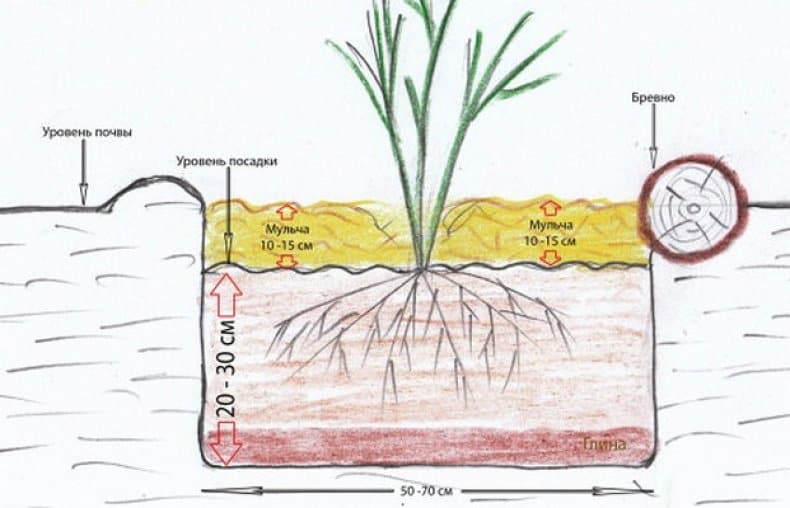
Breeding methods for juniper “Mint Julep”
There are several ways to propagate the Mint Julep juniper. The most laborious is the method of seed reproduction, which is used mainly by breeders with special skills and knowledge. For amateur gardeners, there are two other methods that will give quick results without much effort.
The first way is grafting. In summer, cuttings about 0,1 m long are cut from strong shoots of an adult juniper bush. You should choose young, but healthy and strong shoots that do not have signs of disease and damage. The bases of the segments are soaked for an hour in a solution that stimulates the growth of roots, for example, in Kornevin. Then the cuttings are placed at an angle in containers filled with a substrate and kept in greenhouse conditions until they have a full-fledged root system.
The method of layering involves strengthening the lower shoot of a juniper bush, cleared of needles and twigs, in the ground. After a year, it will fully take root and can be separated from the parent plant and transplanted separately.
Choice of place and conditions of detention
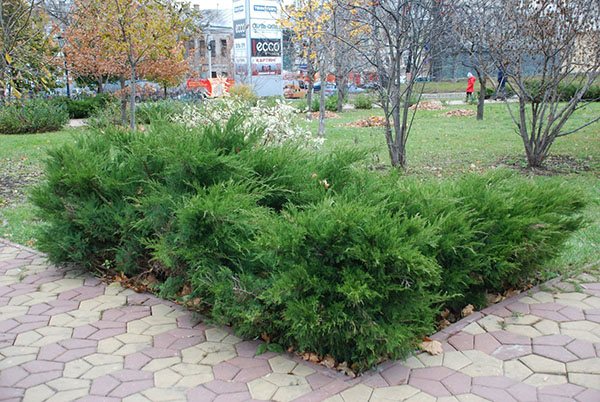

Mint julep is a light-loving plant, for it you need to find a sunny place in the garden, a light shade is also quite acceptable (see photo). He prefers soils well-drained, but not too acidic, otherwise the appearance of the shrub will suffer. Humidity and temperature do not matter for this plant.
Protection against diseases and pests
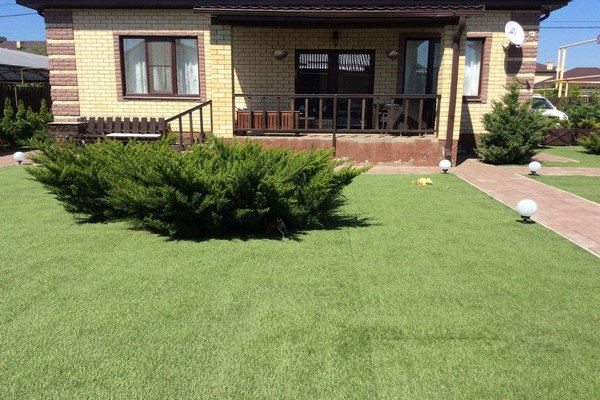
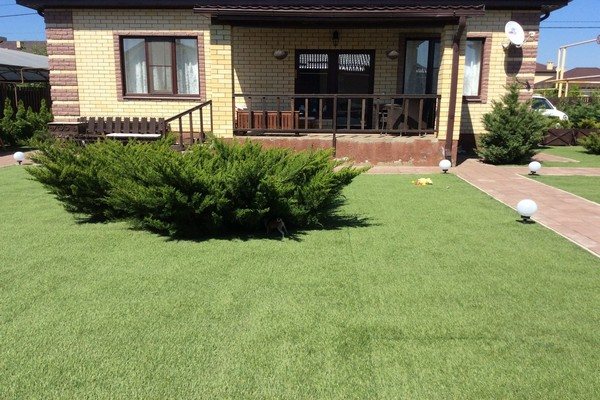
Juniper medium Mint Julep: photo
Like many junipers, the Mint Julep horizontal juniper variety is susceptible to fungal infections that can seriously damage their appearance and reduce their ornamental value. The most common diseases that threaten this juniper variety are pine needles rust and pine needles shedding (shute). As a result of infection, the needles lose their rich color, and the entire bush looks weak and inconspicuous. It is much easier to prevent the disease than to deal with its manifestations later. Therefore, it is recommended to take care of the protection of juniper plantings from fungal infections in advance by carrying out preventive treatment with fungicidal preparations.
Infections are often carried by harmful insects. Most often, the Mint Julep juniper is attacked by such pests as juniper aphid, sawfly beetle, juniper moth, needle mite, scale insect and all sorts of caterpillars. To combat them, you can use insecticidal preparations, remembering that they should be used strictly according to the instructions.
A change in the color of the needles may have other reasons, for example, be the result of improper care of juniper bushes. A deficiency of useful trace elements and minerals, lack of a drainage layer, severe drought or excess moisture in the soil can lead to yellowing of the needles. In this regard, one should pay attention to the condition of the bushes in order to take timely measures to solve the problem that has arisen.
Wintering
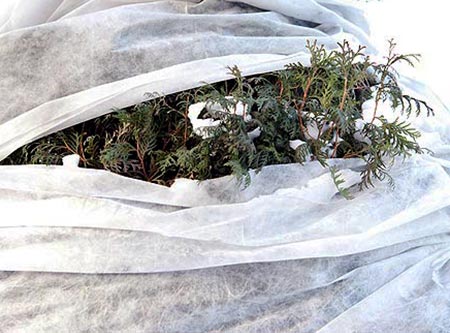
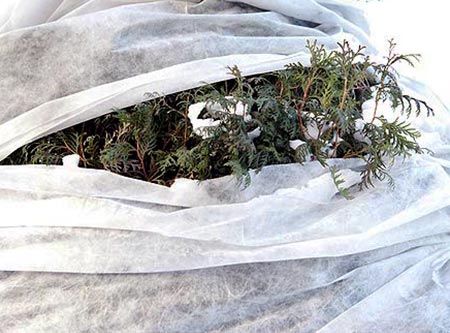
Young bushes from the first years of life should be covered for the winter. The plant is pre-watered, the root zone is mulched. Further, the branches of a young juniper are tied and covered with fallen dry leaves or spruce branches.
If the bush is already an adult, then its branches in winter can break off under the weight of snow. To prevent this from happening, the branches are tied with a strong rope.
Where to plant juniper
The plant looks great both in one copy and in a group planting. The sprawling original crown of rock gardens and stone gardens are very beautifully emphasized.
In landscape design, Mint Julep gives rigor and aristocracy. Looks great in open and well-lit spaces.
It goes well with conifers.
This plant can decorate any garden and become a real pride. And the mint coniferous aroma will perfectly complement the rest time.
The main characteristic of the plant
Juniper Mint Julep is a sprawling evergreen shrub. He fell in love with gardeners for the aroma and decorative lush needles. The plant is of medium height, so it is quite convenient to grow it and use it in group plantings.
- Branches of bright green color are at an angle of approximately 45 degrees in relation to the ground level. If the necessary care is taken for the shrub, then after 10 years of growth, its diameter can reach three meters in width and 1,5 m in height.
- It was bred by crossing such species as Cossack and Chinese junipers. And his homeland is considered to be the United States, a nursery in the city of Saratoga Springs.
- Hence the name of the variety, which literally translates as “mint sweet cocktail” (mint julep). Indeed, his aroma is pine needles with hints of mint.
- It is believed that fruits in the form of berries and branches are quite poisonous, so consider when planting. Especially if there are children.
- The advantage of this juniper is that it perfectly tolerates both dry and hot weather and cold, frosty winters. It is adapted for growing in cities and even industrial areas: in parks, gardens, as a hedge. This plant can also be found along wide sidewalks.
- It can be used both in a single planting and in coniferous compositions, as well as in heather and stone gardens, alpine slides. In any place, it gives a special mood and is a wonderful decoration.
Unpretentiousness and resistance to frost, as well as a pleasant aroma and decorativeness make the Mint Julep juniper one of the favorites in landscape design.
Reproduction
Juniper mint julep, like Chinese juniper medium, propagates only in a vegetative way: by layering or cuttings. The female shrub has seeds, but it is almost impossible to grow a full-fledged ornamental plant from them.
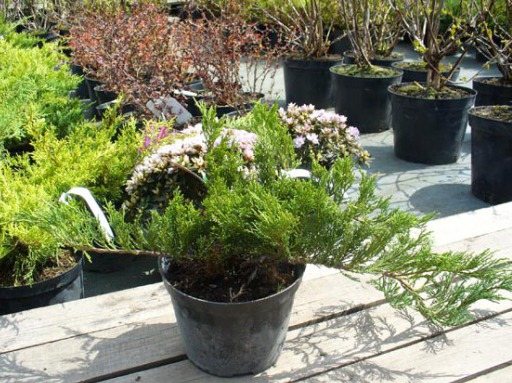
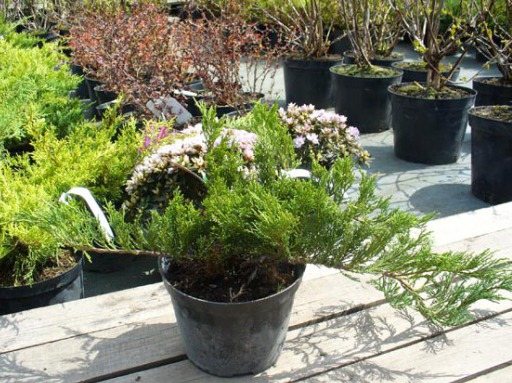
Mint-julep juniper seedlings
Cutting is not a difficult enough way. In a young shrub, it is enough to cut off a twig with a size of 100 mm. For this purpose, you can use scissors or pruning shears. If the bark is peeling off the handle, it should be removed.
Cuttings can be rooted at any time of the year at the appropriate temperature, lighting, soil and other conditions. On the other hand, the best time to plant cuttings is in spring. Rooting is carried out in special pots or containers with a greenhouse. A film is used as a greenhouse. Place it on the pot so that it does not touch the handle. At night, the greenhouse must be covered with a cotton blanket or insulation. Make the ground around the cutting dense and water. In summer, cuttings can be planted in open ground, also under a film. The best period for this operation: late June-early July.
If you need to transplant mint julep juniper, it is better to do it together with a lump of earth.
To accelerate the growth of cuttings, use the Kornevin stimulant. As a result of treatment, the flow of nutrients to the roots of the plant increases. Basically, this preparation is suitable for annual cuttings. Immerse the stem in the stimulant solution for about a third before planting. It should be kept for 8 to 24 hours. After that, the juniper can be planted.
